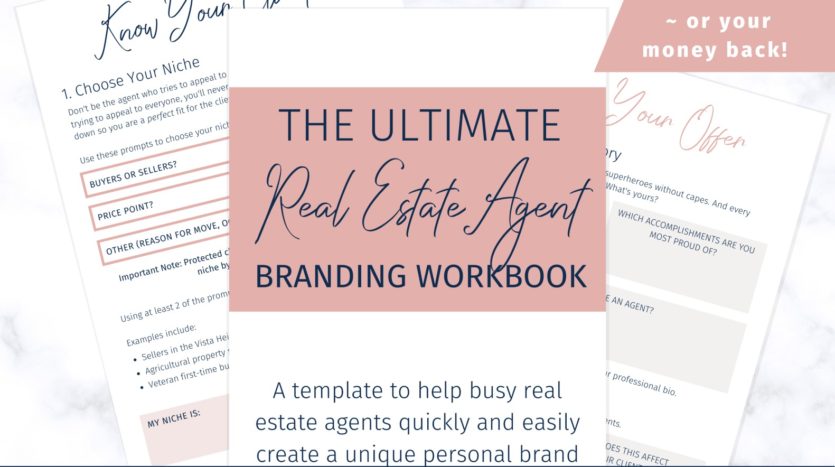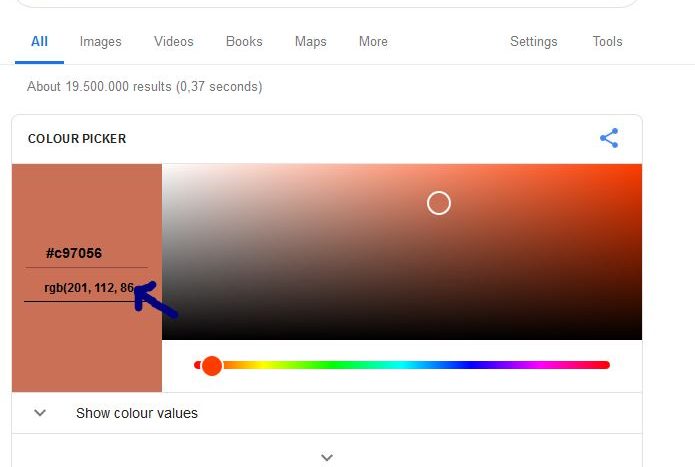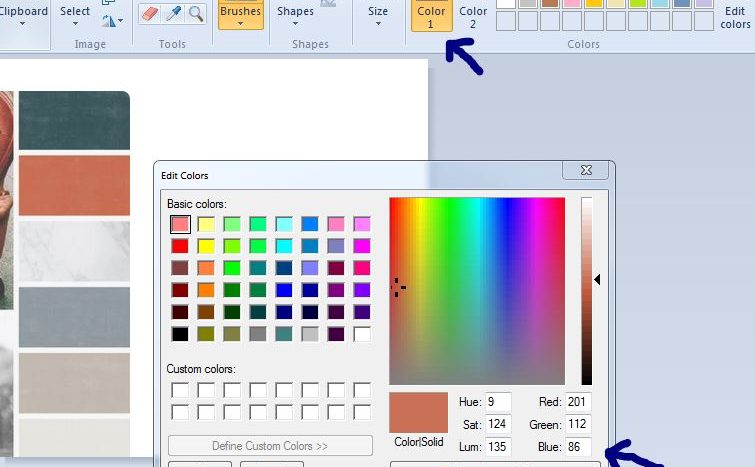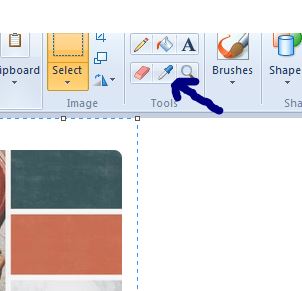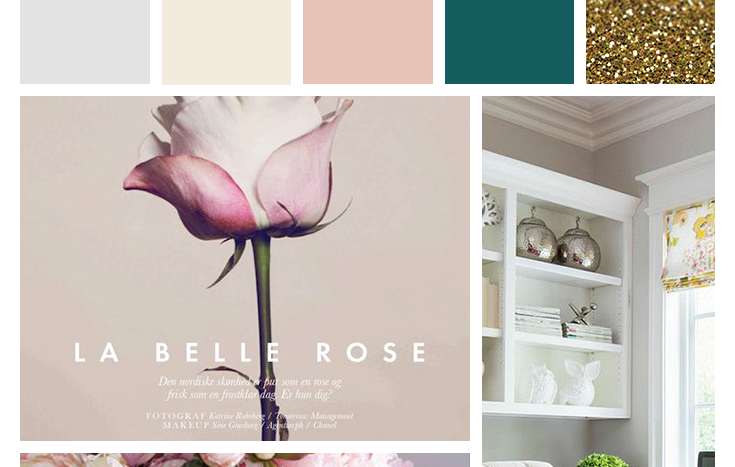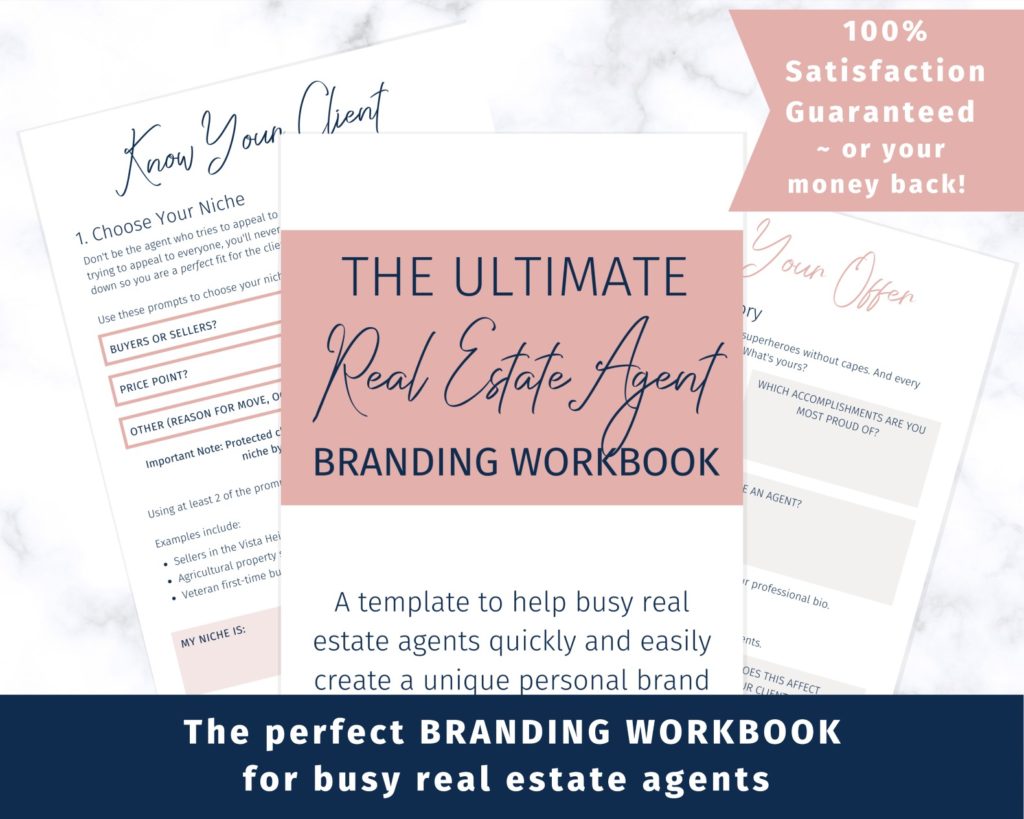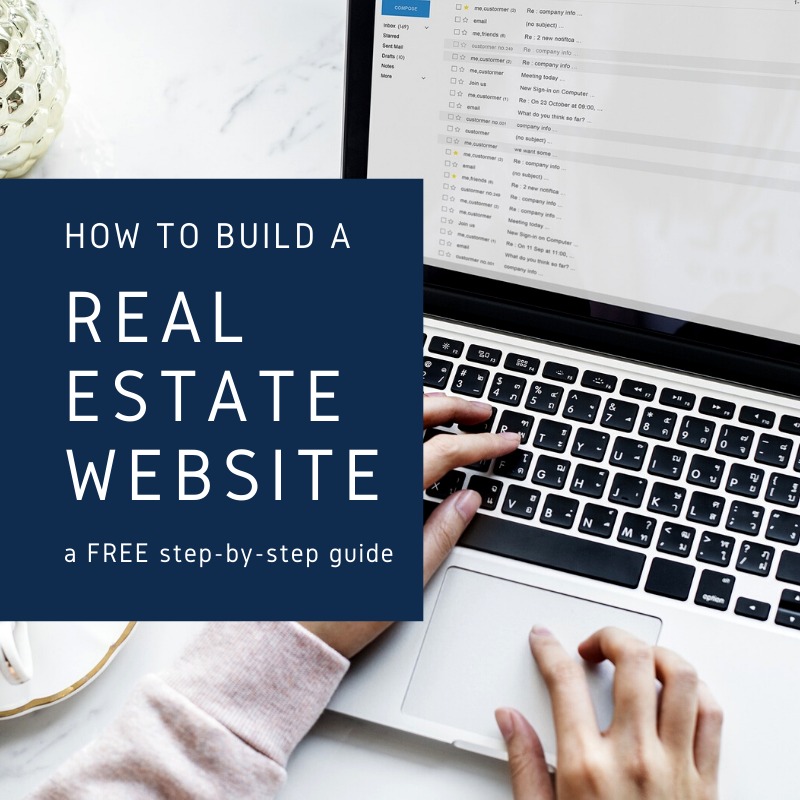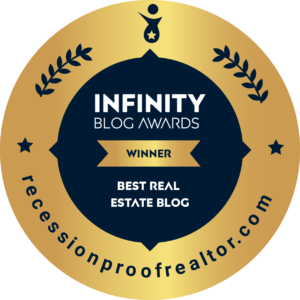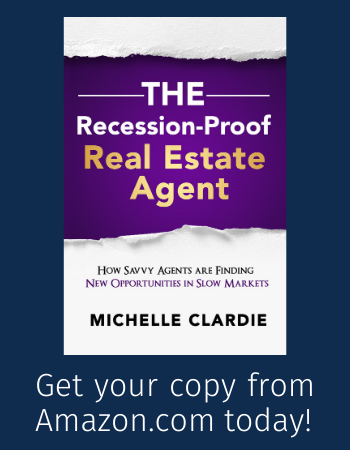Real estate agent branding is a tricky, but vital, component of your success in the industry.
Too many agents rely on their broker’s branding. They brand themselves as a C21 agent or a Keller Williams agent. And that’s just not going to cut it in today’s competitive market.
For one thing, it’s not unique. How many thousands of EXP agents are there? Exactly.
For another, what happens if you change brokers? Or even open your own brokerage?
You need to promote yourself with your own real estate branding, not your brokers.
This post is a down and dirty guide to quickly and easily creating your unique real estate agent branding.
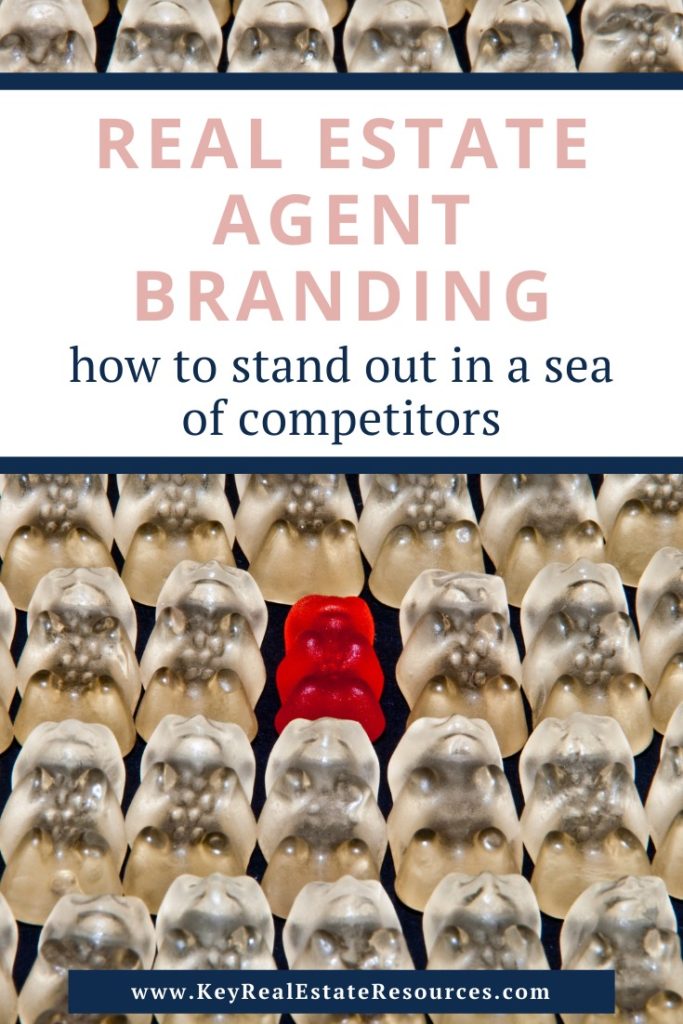
The Quick and Easy Guide to Real Estate Agent Branding
We’re going to help you complete your real estate agent branding in 4 quick phases:
- Know Your Client
- Get Clear on Your Offer
- Transform Your Offer into a Vision
- Put Your Branding in Action
Let’s jump in!
Know Your Client
Step Number One is all about knowing your audience. Starting the branding process from your clients’ perspective will help keep your real estate agent branding focused on your clients’ needs. So let’s pinpoint your ideal client first, then we’ll figure out how to attract them with branding.
Choose Your Niche
Don’t be that agent who tries to appeal to all buyers and sellers in your area. By trying to appeal to everyone, you’ll never stand out to anyone. You need to niche down so that you are a perfect fit for the clients you most want to attract.
Many agents are hesitant to choose a niche because they don’t want to leave potential clients on the table. But there’s a big problem with being open to all clients: you’re competing with all agents.
If you niche down, on the other hand, you’re only competing with a handful of other agents in your niche. Yes, the pool of potential clients is smaller, but the odds of securing those clients are far greater. Would you rather catch 1% of 1,000 fish or 25% of 250 fish? Go for the higher conversion rates by sticking to a niche and becoming the go-to agent for that group.
There are lots of ways to niche down, and you can combine several of them to carve out your unique niche. As you consider niches, ask yourself what type of client you most enjoy working with. Here are a few ways to niche down:
- Buyer or Sellers: You should specialize in one or the other, but stay flexible when your sellers are also looking to buy and vice versa. By the way, buyer/seller is not a niche by itself; it’s just the starting point to focusing on your niche.
- Specific Neighborhoods: If you have a geographic farm, that’s your niche.
- Specific Price Points: Do you focus on luxury estates, starters/fixer-uppers, or somewhere in between?
- Life Events: You could help first-time buyers, down-sizers, or people looking for their “forever home”.
- Occupations: If you have a military base nearby or a large employer in town, you could specialize in helping those members/workers get settled in a new home.
- Property Type: How about focusing on agricultural land, condos, or multifamily?
This goes without saying, but I’m going to say it anyway: protected classes are not niches. It’s never acceptable to niche by race, religion, age, etc.
Create Your Client Avatar
Once you determine your ideal niche (like first-time military vet buyers, for example), you want to learn everything you possibly can about that group. Remember, these aren’t just clients. They’re real people with very real dreams, fears, preferences, and motivations.
Creating an avatar (an imaginary persona of your typical client) forces you to focus on what your ideal clients need from you and how you can best serve them. And how you can best appeal to them through your real estate agent branding.
There are lots of factors to consider when creating your client avatar. Here are some of the most important:
- Goals (by the way, buying or selling are never the goal; consider why they want to buy or sell)
- Values
- Fears
- Challenges
- How much your clients know about real estate (transactions in general, and the local market in particular)
- General demographics (age, gender, familial status, profession, annual income, formal education, etc. – again, you’re not filtering clients by any protected class, but you do need to have an idea of your average client’s demographics because that will factor into some of your real estate agent branding decisions)
- Where your client hangs out, online and offline
Just to reiterate, saying that your client avatar is a 30-year-old, unmarried female buyer doesn’t mean you’d ever discriminate against families with children. This avatar is simply an amalgamation of your typical client for the purposes of appealing to your target market with your branding efforts.
Get Clear on Your Offer
With your client clear in your mind, you can start to clarify your image, tailoring it to meet the needs of your client avatar.
Your Origin Story
We all know real estate agents are just superheroes without capes. And every good superhero has a solid origin story. What’s yours?
How did you come to be a real estate agent? What hurdles have you overcome to get to this point in your life? Which accomplishments are you most proud of? And how does that fit your client avatar’s expectations?
If you’re a native local, great! Part of your origin story is that you were born and raised in the area, so you know everything and everyone.
If you’re a transplant, great! San Diegan by birth, Angelino by choice. Still a great start to your story.
Write down your origin story. It’ll make a great addition to your professional bio!
Your Mission
Why are you doing what you’re doing? What drives you to hustle every day? And, again, how does that fit your client avatar’s expectations? Your personal mission should be meaningful to your clients.
Your Differentiator
Now’s the hard part: verbalizing your uniqueness.
Which of your prospective clients’ needs can you meet better than your competitors? That’s your differentiator.
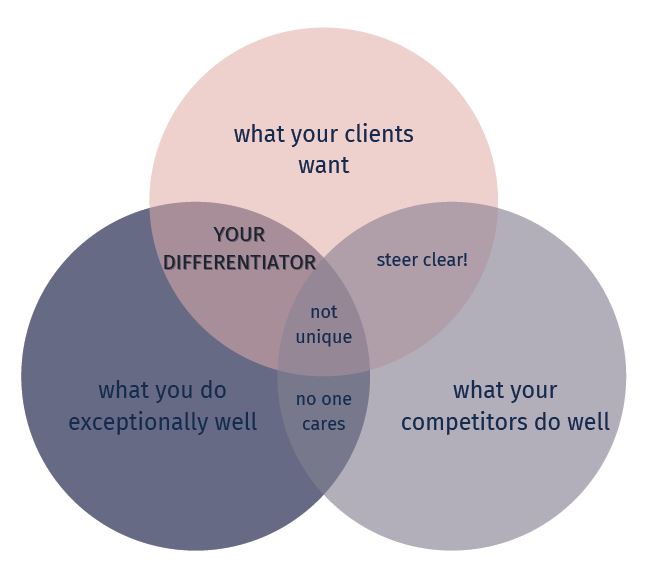
Here are a few differentiator ideas:
- best list-to-price ratio in your niche
- best online presence
- biggest professional network of investors
- most experience with VA loans
- only local agent who speaks Spanish
And if you’re really struggling to find your differentiator, how about offering something no one else is offering. Like:
- professional staging included for all sellers
- new home photo shoots included for all buyers
- or complimentary annual property tax reviews to make sure your clients are never over-taxed (and if they are, you can offer your property tax appeal services on a contingency fee basis!)
There are a million ways to differentiate yourself. Figure out what’s going to make the biggest difference to your prospective clients.
Your 5 Magic Words
To fully cement your professional image, choose 5 magic words that best describe you and your brand. These 5 magic words will guide all your real estate agent branding. If you look at your business cards, website, or marketing materials, and they don’t SCREAM these 5 words, then you’ll know something needs to be changed.
Your differentiator may immediately bring a word or 2 to mind. So might your client avatar.
Then you’re looking for words that convey an idea or emotion you want to resonate with your target audience.
These 5 words are going to be your 5 magic words. So own them and live them!
Transform Your Offer into a Vision
Now that you have a better understanding of your offer, you can turn it into a vision.
In this step, your unique real estate agent branding will really start to take shape!
Choose Your Brand’s Name and Tagline
Naming your brand is harder than most agents expect, mostly because many of the best names are already taken. You need a name that you can “.com” for your website, but that name also has to be available across all social media platforms. Here are a few pointers to simplify the process:
- Keep it under 15 characters. Otherwise, you’ll have to abbreviate your Twitter handle, which dilutes your branding.
- Think lifestyle and location. MB Luxury, Venice Living, or Living in the OC for example. These all focus on the lifestyle of your target audience.
- Never incorporate your Broker’s name. Because 1) it’s probably trademarked and 2) you don’t want to tie your brand to your broker because then you’re in trouble when you decide to part ways.
- Check to see if the domain name is available for your website. If you type your idea into GoDaddy’s domain search, it will tell you if the name is available.
- Then check to see if the name is available on social media platforms. Is there already an @VeniceLiving on Twitter?
If you’re struggling with this step, don’t let it prevent you from moving forward. When in doubt, use your name. If you have a unique name, it could be your brand name by itself. Otherwise, you could incorporate your name with your lifestyle or location. OC Estates by Sarah, Sean Sells Santee, or Lilly’s Life in LB.
Then you can craft your tagline. Skip the cheesy rhyming taglines of the last century. Instead, explain your differentiator in just a few words. That’s a much more powerful tagline.
Create a Mood Board
The best way to start visualizing your brand is to create a mood board. A mood board is basically just a collage of images with a cohesive look that reflects your idea of your brand. These could be patterns, lifestyle photos, design elements, and color swatches.
Here are a few examples:
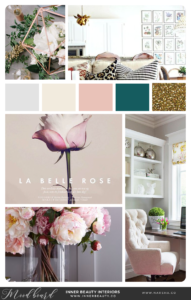


Your mood board should be a visual reflection of your offer. If you offer fun and fresh service for first-time buyers, your mood board should scream fun and fresh with bright colors and trendy designs. And if you offer home-grown expertise in agricultural properties, your mood board should whisper farmhouse chic with natural colors and materials.
Want a shortcut?
If you don’t have time to scour the Internet looking for mood board images, just enter “Mood Board” or “Branding Board” on Pinterest. You’ll find tons of professionally curated boards to inspire your personal mood board.
But one quick word of caution: you could get stuck at this stage for weeks because there are so many engaging boards to see. My recommendation is to set a timer for 20 minutes. Browse away, pinning the images that really speak to you. Then use 10 additional minutes to narrow down your selections until you have a brand board you love.
Choose Your Official Brand Colors
One of the reasons I love the Mood and Branding Boards on Pinterest is that they usually come with a beautifully coordinated color palate.
Choosing colors is difficult for most of us because there are so many shades and it’s hard to know which colors best complement each other. Using the colors from a professionally designed board ensures that your colors all work together perfectly.
If you see a color you love, but can’t figure out exactly what color it is, here’s a quick and easy way to find out:
1. Save the image to your computer.
2. Upload that image to imagecolorpicker.com.
3. Click anywhere on the image to get the details for the color you want from the image.
You’ll be able to use the HTML code or the RGM code to get your colors just right on your website, marketing materials, and social media posts.
So you’ll always have perfectly matched brand colors!
Decide on Your Font(s) and Any Design Elements
It’s generally best to stick with 2 fonts: one bold, and one for easy readability. Your bold font will go on your headers, titles, and logo, and your readability font will be everything else.
Like with colors, you want your fonts to complement each other. There are lots of resources online to find font pairings. Here’s an example of some front combinations from Inkbotdesign.com:
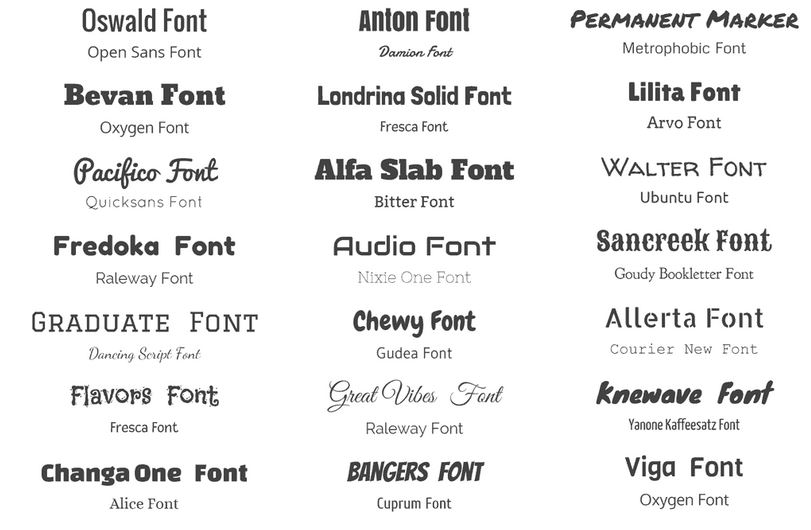
Just make sure you have access to your chosen fonts on all the platforms you use (your website, your marketing design software, etc) as some platforms only offer limited font selections.
If you’re going to have any custom design elements (stripes, brush strokes, patterns, etc), now is also the time to select those.
Create Your Logo
Finally, it’s time to choose your logo.
This is another step that stalls lots of agents. But we have a shortcut to help you get this done quickly and easily.
Head to Etsy. They have lots of personalized logo packs at great rates.
Some Etsy sellers even off custom designed logos. If you don’t see an existing logo pack, you can just contact those sellers with your fonts, colors, brand name, and any of your unique design ideas, and they’ll get you set up in no time.
Easy!
Your Real Estate Agent Branding in Action
With your real estate agent branding complete, it’s time to put your brand into action. Anytime you publish, post, or otherwise contact prospects and clients, you can use your new branding.
Here’s are some of the ways your branding will reach your target audience:
- Your Website
- Social Media
- Mailers
- Open House Forms
- Door Hangers
- Signage
- Your Business Cards
- Digital Newsletters
Before long, your target audience will start to recognize your unique real estate agent branding. They’ll know what you and your brand stand for. And they’ll know how to reach you when they’re ready to buy or sell!
Need to Keep Your Thoughts in Order?
If you’re struggling to keep your branding ideas in order, check out The Ultimate Real Estate Agent Branding Workbook. It’s a complete real estate agent branding guide in a single quick-n-easy PDF! And it’s available on Etsy for a limited time.
Snag your copy and start building your lead-generating real estate agent brand today!



